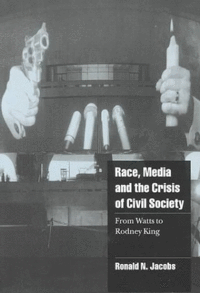

![]()
![]()

Rejecting Habermas's emphasis on a single public arena within which rational-critical discourse can take place, Jacobs recognizes that the unitary view of civil society has ignored "the challenge of multiple publics." The fractured nature of civil society will not be healed simply by a move towards a more integrated public sphere. This is especially true for African- Americans, where the fractured nature of civil society has worked to further the oppression of people of color by marginalizing their voices. And, in fact, as Jacobs recognizes, "Real civil societies have always contained plural and partial publics" (pg.21). For African-Americans this alternative to the dominant public domain was and is best represented by the Black press. Hence, it is important to examine the way in which alternative media provide a space for African-Americans to imagine, to construct another representation, a different version of civil events. It is tempting to fall into the trap of assuming that hegemonic discourse is all pervasive. However, subordinated groups can and do create "subaltern counter-publics" that can oppose dominant representations of civil events. For this reason, Jacobs study of the Black press is essential in understanding the relationship between the dominant, hegemonic media and opposition to what that media represents.
In his second chapter, Jacobs outlines the historical context for the rise of multiple- publics and the alternative news media oriented towards the African-American community in New York, Chicago, and Los Angeles. By examining the general trends in the African American press and mainstream press between 1950 and 1990, Jacobs is able to show how the decline in the Black press is partly caused by the nationalization of the news, the isolation of the inner cities, and the residential mobility of the Black middle class. These changes have seriously affected the way in which the African-American community understands events which directly involve their members in conflict with mainstream media representations. To understand these changes, Jacobs compares the news frames of the Watts uprisings of 1965 to the Rodney King beating and the Los Angeles uprisings of 1992. In all three instances the framing of the news events was quite different between the African-American press and the mainstream media. Jacobs reveals that the African-American press was much more sympathetic than the mainstream press to the rioters in 1965 compared to 1992, when the mainstream media appeared more sympathetic than the African-American press to the uprising. Why this is the case has to do with the imposition of a "tragic" framing of the event and the perceived relationship between current and past African-American political struggles and successes.
This book makes an excellent contribution, not only to media studies, but, to the literature on civil society which has often ignored the imposition of power, multiple-publics and oppression in favor of a liberal-rational discourse stance that ignores the concrete conditions of subordinated groups.
Talmadge Wright
Loyola University of Chicago